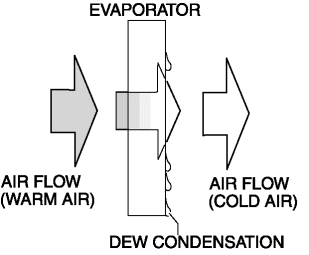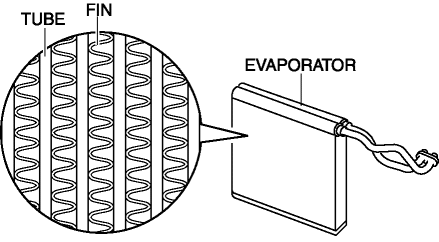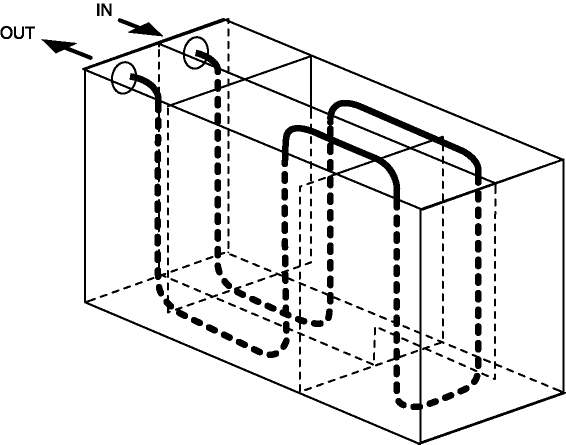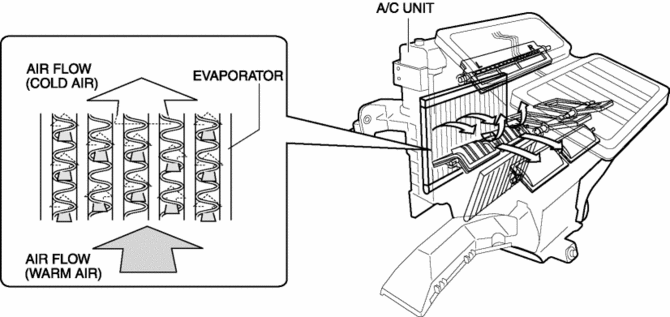Mazda CX-5 Service & Repair Manual: Evaporator
Purpose
-
The evaporator cools the passing air.
Function
-
The evaporator vaporizes the atomized refrigerant flowing internally, and the air passing through the evaporator is cooled by the release of latent heat. The moisture in the air is condensed at this time and dehumidified air is blown into the cabin.

Construction
-
The evaporator consists of the tube which passes refrigerant, and the heat radiation fin.

-
The cooling medium flow pattern shown in the figure has been adopted for the evaporator.

Operation
-
The atomized refrigerant sent from the expansion valve is captured by heat from the outside. As a result, the evaporator is cooled.
-
The air blown by the blower motor is cooled by heat exchange when it passes the heat radiation fin of the heater core.

Fail-safe
-
Function not equipped.
 Drive Belt [Skyactiv G 2.0]
Drive Belt [Skyactiv G 2.0]
Purpose, Function
The drive belt transmits rotation force of the crankshaft pulley to the pulley
for the auxiliary parts.
Construction
The drive belt is installed to the front o ...
 Evaporator Inspection
Evaporator Inspection
1. Inspect the evaporator for damage, cracks, and oil leakage.
If there is any malfunction, replace the evaporator.
2. Visually inspect the fins for bending.
If there is any bend ...
Other materials:
Blind Spot Monitoring (Bsm) Control Module
Purpose
Controls the blind spot monitoring (BSM) system.
Function
The BSM control module emits microwaves to detect an oncoming vehicle's position
and speed information via the reflected microwaves.
The BSM system is controlled based on the detected vehicle positio ...
Low Engine Coolant Temperature Indicator Light (Blue)/High Engine Coolant Temperature
Warning Light (Red)
Purpose
Low engine coolant temperature indicator light (blue)
The low engine coolant temperature indicator light (blue) notifies the driver
that the engine coolant temperature is low and vaporization of the fuel is difficult.
High engine coolant temperature warning light (red)
...
Front Side Frame (Partial Cutting) Removal [Panel Replacement]
Symbol Mark
Removal Procedure
1. Drill the 4 locations indicated by (A) shown in the figure, then remove suspension
mounting reinforcement and outer frame reinforcement.
2. Rough cut location indicated by (B) shown in the figure.
3. Drill the 6 locations indicated by (C) shown in the fig ...
